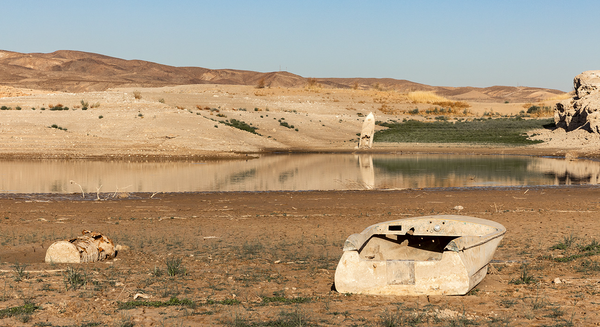At the beginning of this year, the residents of the Arizona town of Rio Verde found themselves without a water supply. Previously, it had been supplied by the nearby city of Scottsdale, which has now ceased allowing water to be hauled outside the city limits to mitigate its own shortage. Rio Verde’s predicament is only the most dramatic reminder of the severe drought affecting the American Southwest, which has been gaining population for decades.
None of this should be a surprise to anyone familiar with the book Cadillac Desert, by the late American environmentalist Mark Reisner. The subtitle—The American West and Its Disappearing Water—suggests the book might have been written yesterday, but it was published in 1986. Nearly four decades ago, Cadillac Desert accurately predicted where states like Arizona and Nevada would find themselves in our time.
“The regional water equation is simple: There isn’t enough of it.”
The regional water equation, as Reisner shows, is simple: There isn’t enough of it, everyone wants it, and the groundwater reservoirs deep beneath the soil are a finite resource that will eventually run out. People knew this in the 1980s, they knew it at the turn of the millennium, and they know it today. The American Southwest was once home to the Hohokam, whose eventual demise resulted from shifts in the climate that rendered previously inhabitable areas inhospitable. Barring the unforeseen, a similar fate awaits Scottsdale and other cities.
The core argument of Cadillac Desert is that the American Southwest has been in a permanent water crisis for half a century or more, and that the gains in the struggle against the harsh conditions of the desert have always been temporary and fragile. A complex mix of ingenuity, audacity, and short-termism has allowed the development of an impressive outpost of modern urban civilization in the desert, but no matter how hard we work to keep nature’s debt collectors at bay, the debt will have to be paid.
Today, all the warning lights are blinking red: Lakes Mead and Powell, two major reservoirs drawn from the Colorado River, are both in a perilous state. They risk reaching dead-pool levels within a few years: that is, low enough levels that water will no longer flow through the dams to reach the downstream communities reliant on it. Nonetheless, in the midst of this crisis, developers in states such as Arizona are busy trying to build even more retirement homes and suburbs, even as some of the new developments are running out of water supplies.
Again, the math is simple. Due to natural population growth and inflows, the states drawing water from the Colorado need more water than before, even as the Colorado itself is incapable of keeping up with present demands. This situation can’t last forever; in fact, it probably can’t even last 15 more years.
The end result of this will likely be a rerun of the Oklahoma dust bowl: a staggered but ultimately massive wave of internal migration spilling out of the states affected by the crisis. And it now looks like the crisis will begin to bite at a time when the United States is polarized at home and overtaxed abroad.
This isn’t a small thing. Mikhail Gorbachev, who presided over the collapse of the Soviet Union, attributed more blame to the Chernobyl disaster, and the massive costs it imposed on the Soviet state, than to his policies of Glasnost and Perestroika. Contrary to popular perception, the death toll of Chernobyl was fairly small. It was the cost of cleanup, as well as the massive expense inherent in relocating some 350,000 citizens away from the affected areas, that broke the back of the Soviet state.
The American crisis will unfold more gradually than the Chernobyl meltdown, of course: Water won’t run out for everyone all at once. The economic and social crisis will begin as a trickle—or, as the Rio Verde situation suggests, it already has. But the effects of this internal migration and displacement, of the economic distress of fixed capital (and people’s livelihoods) being destroyed, might lead to even greater political division and instability.
Conflicts between states over water aren’t new in American politics. Arizona has been locked in an almost century-long struggle with California over the Colorado River that at one point led the Golden State to mobilize its national guard and occupy Arizonan territory. The phenomenon of governors pitting themselves against the federal government and other states, recently on view in conflicts over immigration, is likely to accelerate once the effects of the 21st-century dust bowl come more fully into view.
This is why Cadillac Desert makes for a bracing read today, 23 years after Marc Reisner’s death. The book itself mirrors the mindset of many environmentalists in the author’s time: divided between a sense of grudging awe—at the massive water projects, at golf courses glimmering like emeralds in the parched landscape, of cities sprawling out as far as the eye can see in an ecosystem humans really had no business settling in—and a sad recognition of the reality that all of these things will one day turn out to be just another desert mirage.
